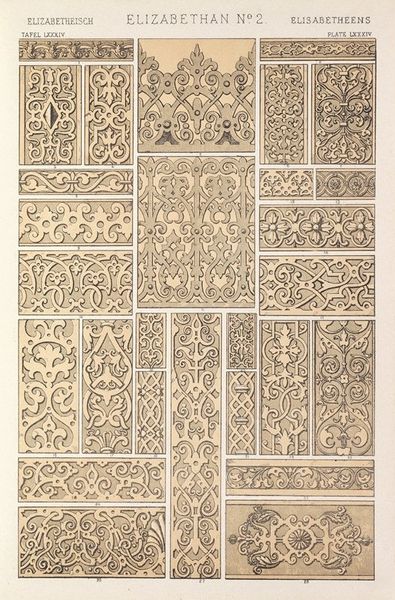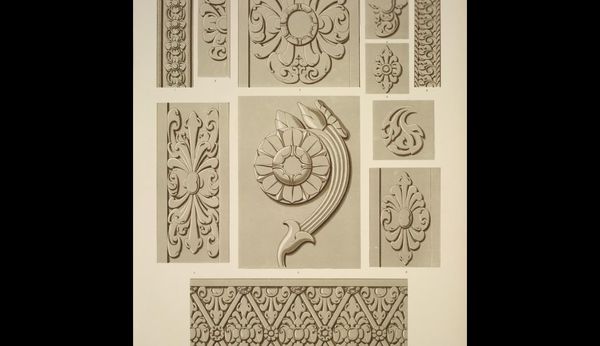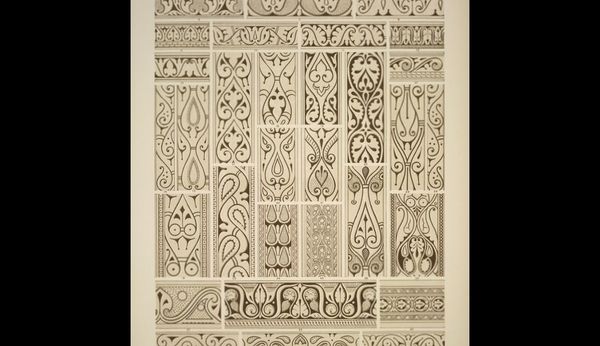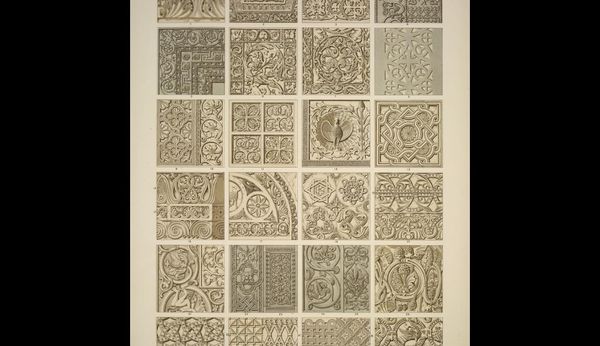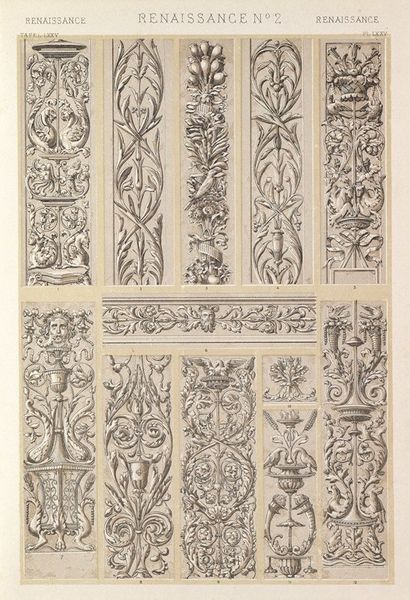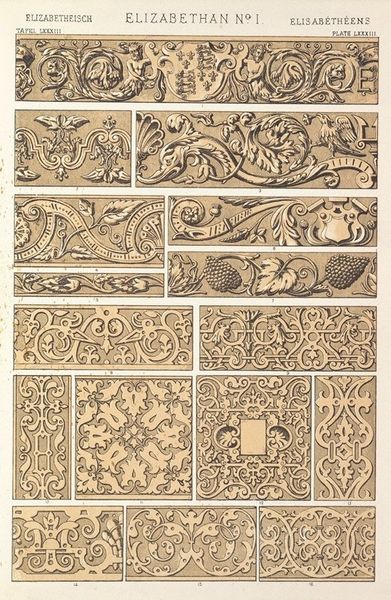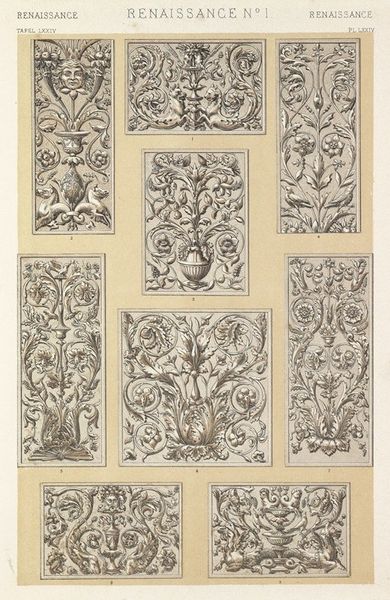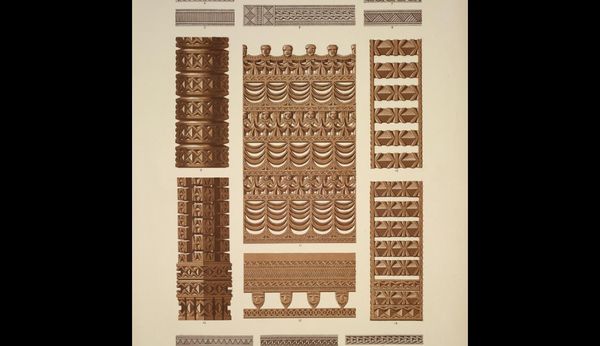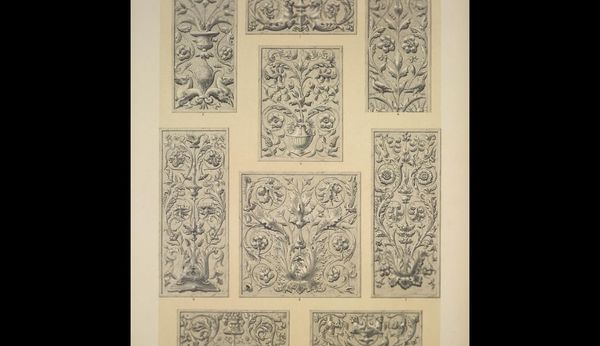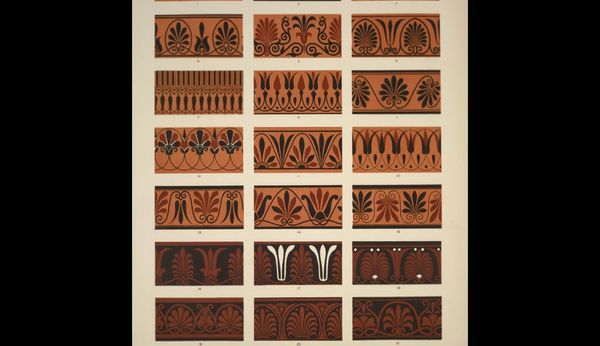
drawing, print, architecture
#
drawing
#
natural stone pattern
#
architectural landscape
#
architectural modelling rendering
# print
#
pattern
#
architectural photography
#
architectural form
#
geometric pattern
#
repetitive shape and pattern
#
geometric
#
architectural drawing
#
line
#
architectural
#
layered pattern
#
architecture
Copyright: Public domain
Owen Jones produced "Nineveh and Persia no. 3" during the height of the British Empire. Jones, an architect and designer, sought to codify decorative principles from various cultures into a universal design language. However, this endeavor needs to be seen through the lens of its time. As Europe expanded its colonial reach, there was a growing interest in the art and design of colonized regions, often appropriated and reinterpreted through a Western lens. Jones believed that understanding historical styles could lead to better contemporary design, yet this approach also risked flattening cultural nuances and reinforcing imperial power dynamics. How do we reconcile Jones' genuine interest in cross-cultural design with the complex politics of representation and cultural exchange inherent in his project? Ultimately, "Nineveh and Persia no. 3" prompts us to consider the ethics of cultural appropriation and the responsibilities that come with interpreting and representing diverse artistic traditions.
Comments
No comments
Be the first to comment and join the conversation on the ultimate creative platform.


